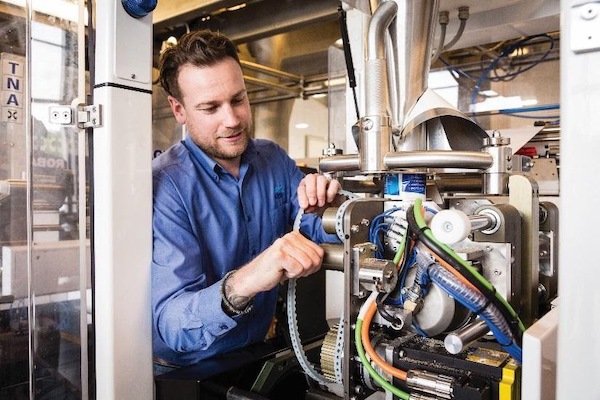Spare A Minute For Your Spares: How to keep on top of equipment maintenance
posted on 7 April, 2020 by Raj Singh - Group Aftermarket & Services Manager
Spare parts are a key requirement for the smooth running of any food production line. Unplanned downtime is by far one of the biggest threats to profitability and efficiency. Every minute a line stops, is money wasted. Keeping the right parts in stock not only keeps downtime to a minimum, but also extends the lifetime and overall equipment effectiveness (OEE) of your equipment. But not all parts are created equal.
Let’s take a look at the different categories of spare parts and how OEMs can help you turn your maintenance protocol into a success.
Category 1: High-wear parts

High wear parts comprise of both, consumables that wear out after a certain amount of time and can’t be repaired, as well as spares with a low lifecycle. On VFFS packaging systems, these would be items like vacuum belts, tube closer components, former wear strips, knives and anvils, but also printer ribbons on dater coders. Most equipment manufacturers will recommend having these parts in stock at all times as they are critical to the functioning of the system. Moreover, some parts might not always be readily available, so keeping an adequate stock is highly recommended. Look for OEMs that offer discounts in exchange for returned parts as these can provide significant savings, whilst also ensuring that the machine’s operational efficiency doesn’t suffer due to improperly repaired parts. It is also important that the supplier is able to source spare parts locally to reduce shipping costs.
Category 2: Medium-wear parts
Medium-wear parts are usually parts that have a longer lifecycle than category 1 and in some cases, can even be repaired or refurbished. Examples include timing belts, heating elements, thermo couples and servo motors. While these parts tend to last a lot longer, it’s still important to keep an eye out for upgrades and new developments. An OEM that is committed to innovation will have a team of engineers that are purely tasked with the objective to further improve the reliability and effectiveness of your system. Whether this means new jaws for faster seal times or high-performance gearboxes that can withstand high temperatures, even small upgrades or retrofits can often generate an immediate return on investment.
Category 3: Low-wear parts
Low-wear parts such as formers, shoulders or load cells can last years and even then, will often only require repairs in order to function again. Once again, partnering with an OEM that offers a comprehensive range of after-market services will deliver significant benefits. With a global team of specialised service engineers, parts that need to be replaced can be identified quickly and replaced well before a breakdown occurs. In addition, they’re also able to provide you with detailed maintenance schedules that can predict future service requirement and forecast upkeep costs for complete transparency. By adhering to a regular service schedule, any wear and tear can be detected quickly, preventing potential problems further down the line.
At tna, we know that our job isn’t done once the equipment is installed and up and running. Our 360° customer care program offers some of the most comprehensive after-market support services on the market, ranging from spare exchange programs to preventive maintenance and equipment life cycle management. Contact your local after-market today if you’re ready to invest in the future of your production line.



 Español
Español  Português
Português  Italiano
Italiano  日本語
日本語  中文
中文  Français
Français  Deutsch
Deutsch  Русский
Русский  العربية
العربية 





